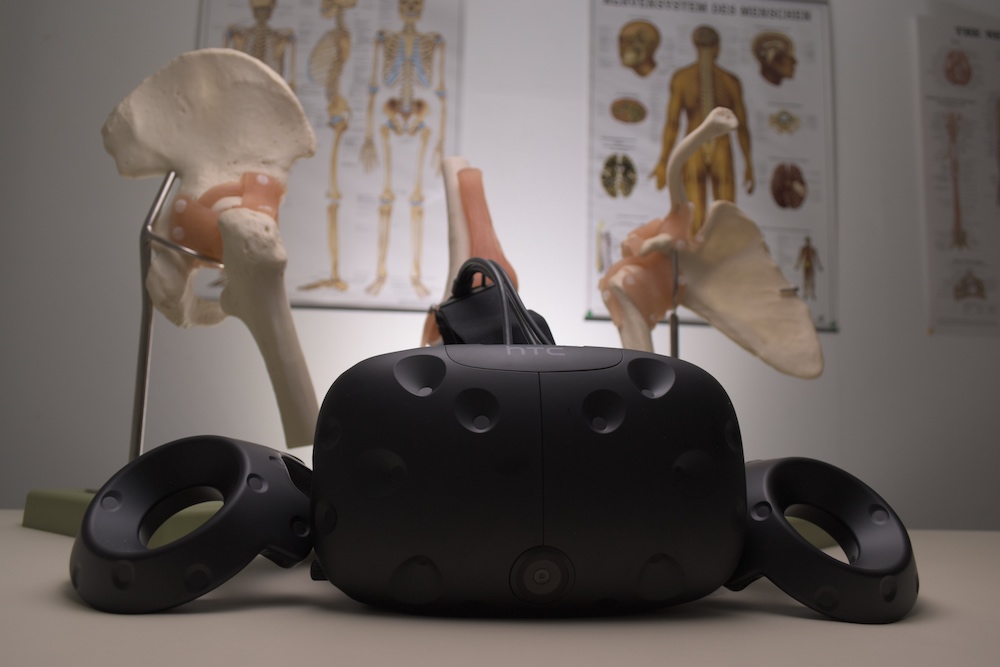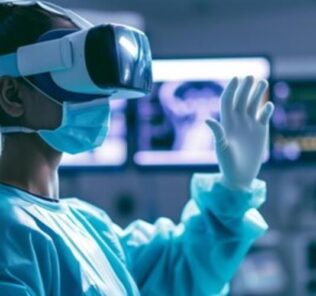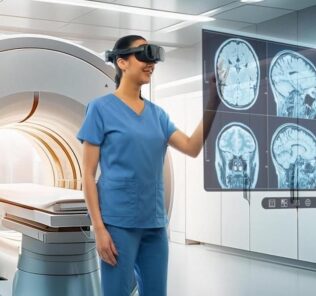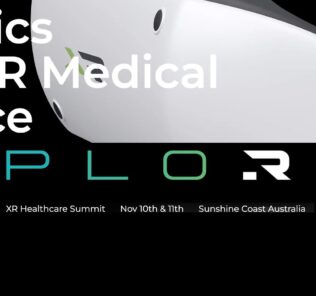Introduction to XR Technologies in Healthcare Simulation
The field of healthcare simulation has greatly benefited from advancing technologies, especially regarding the use of extended reality (XR). This term includes all immersive technologies that “extend” the traditional learning experience through immersive interactions. Together, mixed reality (MR) simulation, virtual reality (VR) simulation, and augmented reality (AR) simulation have presented new innovative ways for learners and professionals to be immersed in training scenarios and thereby increase their knowledge and skills. This HealthySimulation.com article provides an introduction to XR technologies in healthcare simulation and sheds light on their many benefits.
Ultimately, XR learning is made possible through a number of mediums, including applications, headsets, online scenarios, and more. MR, VR, and AR, XR devices (including the Valve Index, HTC Vive Pro, Oculus Rift S, and Oculus Quest 2), can all be used to employ a variety of software and training techniques to provide lifelike training environments for learners to supplement physical simulation education in healthcare.
By using these devices and software, XR platforms are able to reframe how medical learners are taught to understand complex concepts and actions – such as catheterization and surgery. Learning through immersion then impacts the quality of care they are later able to provide to real-life patients. As more companies begin developing XR solutions, the realm of possibilities is becoming endless for universities, medical facilities, and all others depending on clinical simulation to provide healthcare education.
Sponsored Content:
Today, XR technologies are considered to be beneficial for many reasons, including their ability to educate on numerous topics and for their innate flexibility. These technologies are also beneficial because they are able to be used anywhere and at any time with specialized software and hardware. Additionally, the technologies are often reusable, reducing the costs involved in educating numerous learners over periods of time. Their immersive learning engages learners directly with the material being presented in an experiential simulated environment that many have come to prefer over traditional instruction.
An example of XR simulation’s use across education includes the ability to help train future brain surgeons to master neurological procedures or to better understand the inner workings of the brain through XR surgical simulation. This type of immersive learning using XR technologies became especially useful during COVID-19 when many healthcare simulation centers were temporarily shut down, forcing learners and educators to rely on newer technological alternatives.
XR Mediums Breakdown
Augmented Reality (AR) Simulation: This type of XR is used to transition the learner’s real-world environment through the use of digital overlays.
Sponsored Content:
Virtual Reality (VR) Simulation: This type of XR often uses a VR headset to allow users to interact with new digital worlds within a fully-simulated and immersive environment.
Mixed Reality (MR) Simulation: This type of XR incorporates both physical environments and objects and virtual content and components.
Recorded HealthySimulation.com CE Webinar:
Mixed Reality XR and Healthcare Education: What Does the Future Hold?
In the article “The role of extended reality technology in healthcare education: Towards a learner-centered approach,” (1) authors Abison Logeswaran, Chris Munsch, Yu Jeat Chong, Neil Ralph, and Jo McCrossnan add that XR has the potential to cause a major paradigm shift in healthcare education, but this is more likely to be successful “if a learner-centered approach is adopted.” This means that the learner must be at the center of the instructional process and the educator’s role is primarily that of a facilitator. This is powerful, as users can largely take control of their overall learning experience.
Examples of XR Healthcare Simulation Vendors
UpSurgeOn BrainBox: The UpSurgeOn project strives to empower the learning and teaching methods of neuroanatomy and neurosurgery through high-tech cognitive, virtual and physical technologies. UpSurgeOn’s BrainBox is a neurosurgical simulator for both virtual and physical hybrid training. The product is a hyperrealistic simulator of neurosurgical approaches and intracranial scenarios. The BrainBox is modular; a learner has the ability to change the internal scenario, in order to switch from one approach to another.
SimX: SimX, previously called SimXAR, is a healthcare software company specializing in medical simulation, virtual reality, augmented reality, and medical training and education. The company brings virtual and augmented reality into the realm of healthcare simulation and training. Seeking to push simulation forward, SimX developed a software system that was the first comprehensive professional-grade VR medical simulation system product available on the market.
Oxford Medical Simulation: Oxford Medical Simulation are leaders in virtual reality medical simulation, and trains healthcare professionals to deliver consistently world-class patient management without risking lives. The company removes barriers by offering virtual reality training scenarios and provides a completely safe, controlled-stress learning environment for all healthcare professionals. The fast-paced, repeatable, real-life scenarios can deliver consistently excellent, standardized clinical training to doctors, nurses, and all other healthcare professionals. For example, OMS virtual reality nursing scenarios allow nursing educators to deliver immersive, standardized simulation scenarios, feedback and blended learning in one easy-to-set-up intuitive platform.
Acadicus: Acadicus is a virtual simulation platform that provides a library of content and tools for hosting live simulations or capturing 3D recorded instructor demonstrations. The company’s high-fidelity virtual simulation tools empower learners with hands-on clinical experiences in a safe environment. They can gain access to millions of dollars worth of virtual facilities and equipment, including interactive patients, and authentic learning environments in an expansive and rapidly growing Shared Content Library. Private Labs in Acadicus can be used to host multiplayer simulations, capture 3D Recordings, or create and edit simulations with full access to the Shared Content Library. A Lab can be transformed into a wide variety of learning environments by loading various Scene Templates.
GIGXR: GIGXR is a SaaS platform that delivers extended reality (XR) healthcare simulation applications for learning environments, higher education institutions, and enterprise facilities. The company offers an energetic training solution using Augmented Reality (AR) by creating innovative clinical simulation applications to solve perennial problems around visualization and 3D understanding. The company’s holographic applications and immersive learning platform have been built on years of pedagogical research. Adding to their credibility, they were developed by a team of experts and thought leaders in the fields of mixed reality learning, education technology, science, digital content, artificial intelligence (AI in simulation), and startup technology.
Learn More About XR Management Systems
References:
https://www.ncbi.nlm.nih.gov/pmc/articles/PMC8004346/
Lance Baily, BA, EMT-B, is the Founder & CEO of HealthySimulation.com, which he started while serving as the Director of the Nevada System of Higher Education’s Clinical Simulation Center of Las Vegas back in 2010. Lance is also the Founder and acting Advisor to the Board of SimGHOSTS.org, the world’s only non-profit organization dedicated to supporting professionals operating healthcare simulation technologies. His co-edited Book: “Comprehensive Healthcare Simulation: Operations, Technology, and Innovative Practice” is cited as a key source for professional certification in the industry. Lance’s background also includes serving as a Simulation Technology Specialist for the LA Community College District, EMS fire fighting, Hollywood movie production, rescue diving, and global travel. He and his wife Abigail Baily, PhD live in Las Vegas, Nevada with their two amazing daughters.
Sponsored Content:





















